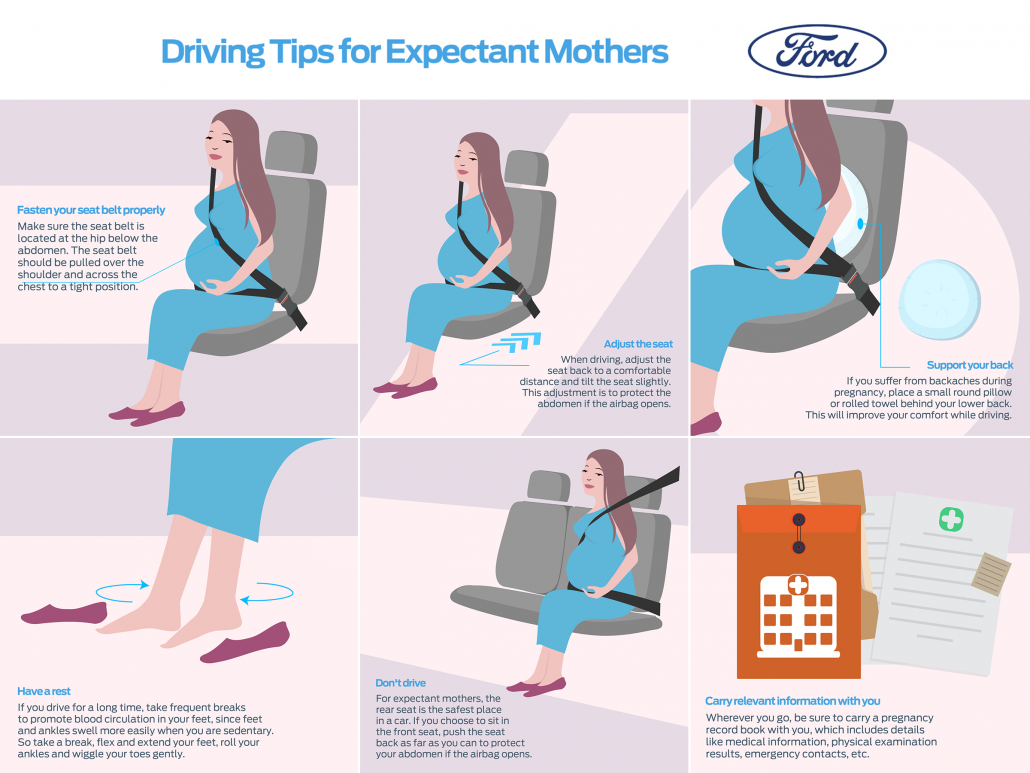Driving Tips for Expectant Mothers: Staying Safe on the Road to Motherhood
Your journey to parenthood is an exciting time that requires much preparation, and also includes staying safe on the road. During pregnancy, mothers-to-be need to continuously make in-vehicle adjustments to ensure optimal positioning and safety while driving.
To help engineers better understand the needs of expectant mothers, Ford Motor Company designed an œempathy belly – or pregnancy suit. This maternity suit adds an extra 13.6 kg of weight (the average weight gained during pregnancy) and simulates the bulkiness and discomfort of the third trimester of pregnancy, helping engineers design vehicles that enable expectant mothers – and a broad range of drivers – to make necessary adjustments that support safe driving.
Based on insights gained from wearing the empathy belly, here are top tips from Ford to further help you on the road to motherhood.
Seat belt safety
First remove coats or other bulky clothing to ensure a snug fit. Pull the seat belt over the shoulder, between the breasts and to the side of the belly. The lap portion of the belt should be located at the hip, and below – not across – the abdomen, making sure it lies as flat as possible under the curve of the belly. Never put the shoulder belt behind you or under your arm, as this can cause serious injury in the event of an accident.
Make proper vehicle adjustments
Move your seat back to a comfortable distance from the pedals, ideally sitting about 10 inches away from the steering wheel, to protect your abdomen if the airbag deploys in an accident. If your car’s steering wheel is adjustable, point the center of the steering wheel away from the belly and toward the chest. After changing your seat position, be sure to adjust your rearview and outside mirrors. And if you suffer from backaches, place a small round pillow or rolled towel behind your lower back to improve comfort while driving.
From snack attacks ¦to nausea
Food cravings – and œmorning sickness – can happen at any time of day. Be sure to pack plenty of water and your favorite snacks to satisfy those cravings. Keep extra œnausea bags in your purse and glovebox. And always avoid distracted driving – pull over to a safe place when hunger or sickness strikes.
Have a rest ¦or avoid driving
The œpregnant brain endures more strain than usual, so map out your trips in advance. Avoid driving long distances if possible, and take frequent breaks to promote blood circulation in your feet, since feet and ankles swell more easily when sitting for extended periods of time. So take a break, and stretch and move your legs, feet and toes.
Avoid driving when possible. For expectant mothers, the middle rear seat is the safest place in a car (as long as it offers a shoulder and lap belt). But if you sit in the front passenger seat, push it back as far as possible to protect your abdomen if the airbag deploys.
Now that you’re prepared for safer driving on the road, it’s time to find the perfect child safety seat for the first ride home with your baby.



